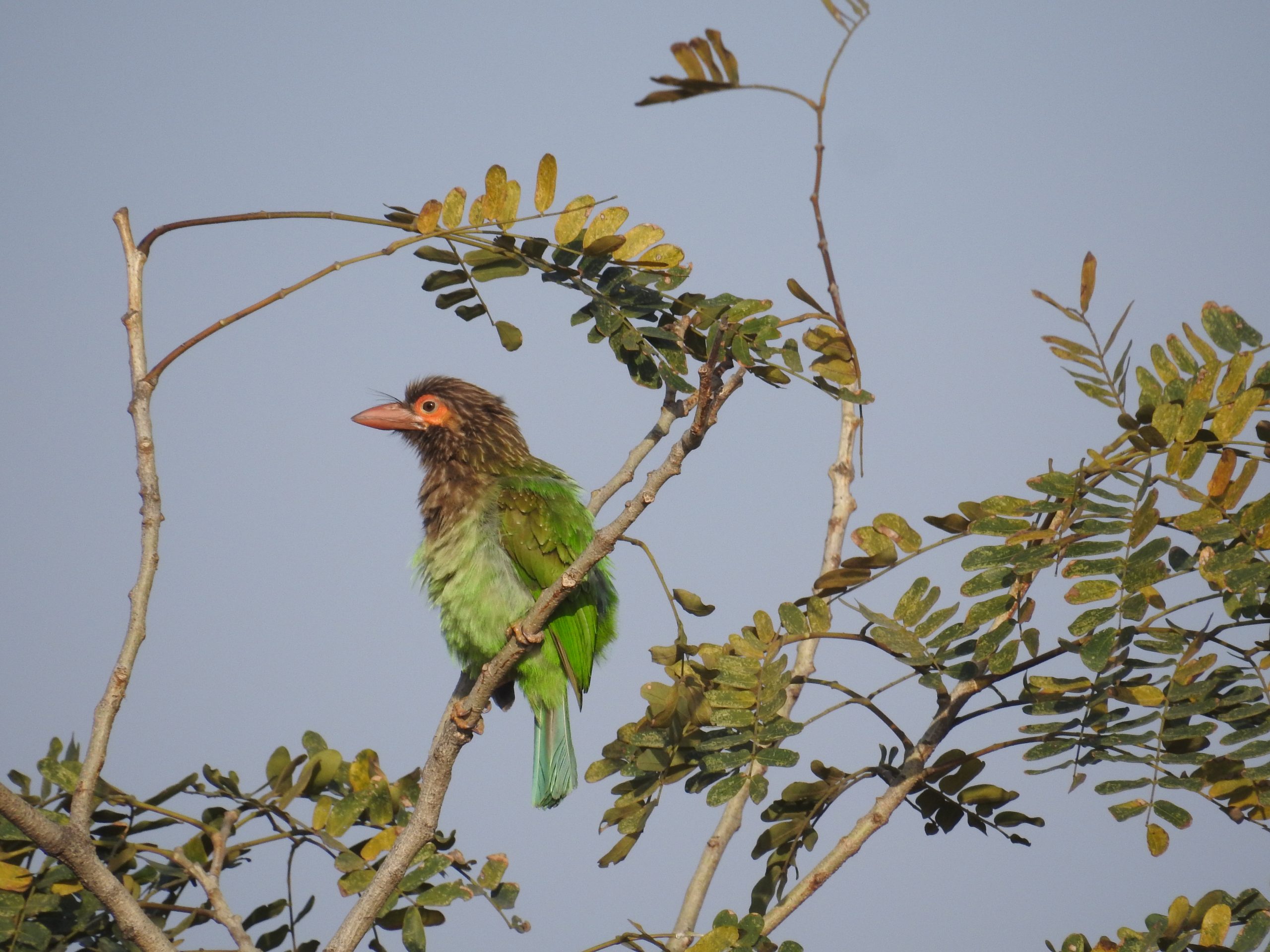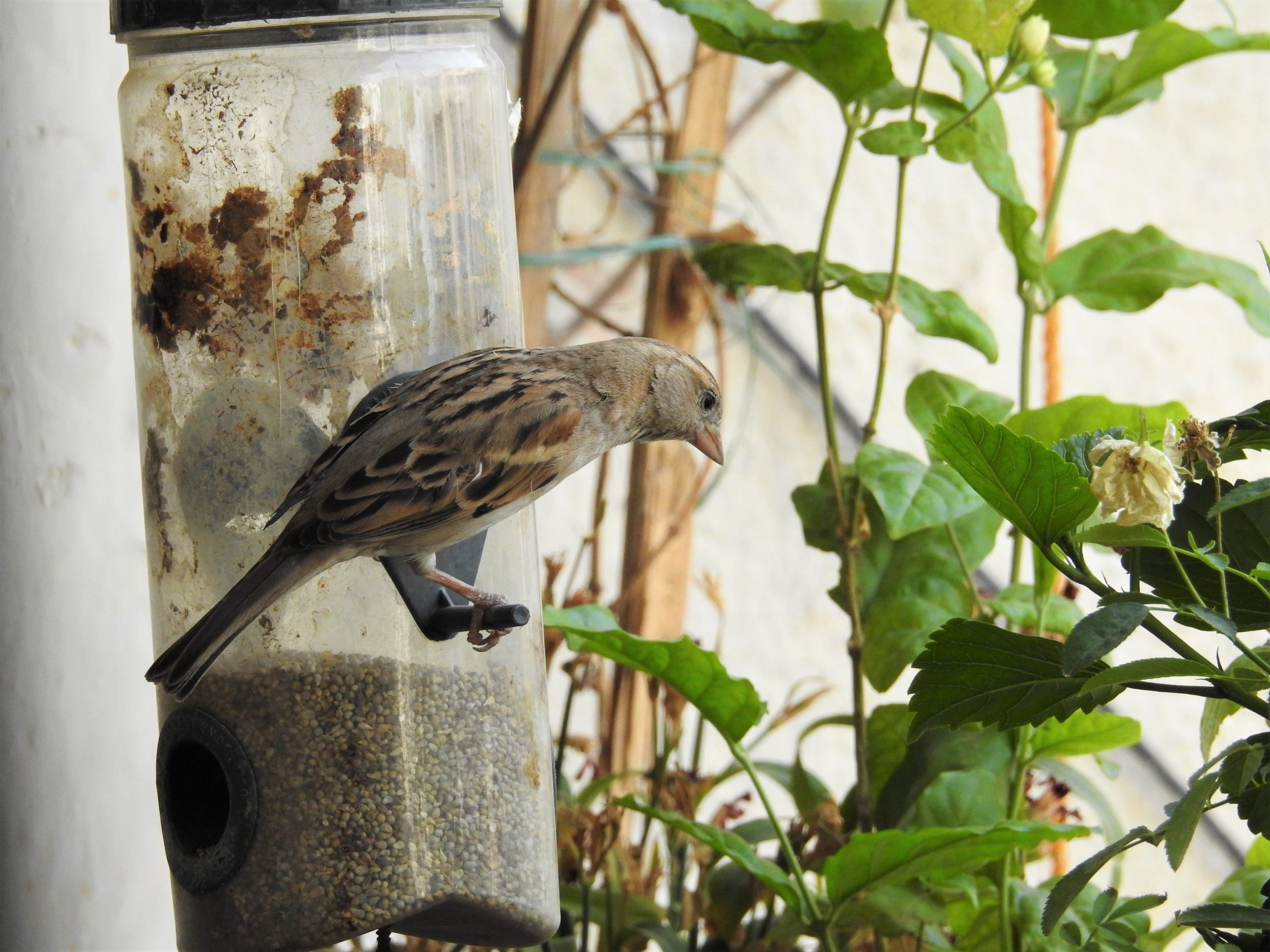Barring a few metropolitan cities, the house sparrow is doing well in rural areas in India
If sparrows enter our homes, it’s because we want them there. I can’t think of any other wild animal which is so missed by people. There was global outrage when the house sparrow started declining


There are many sounds of summer. Summer sounds could be the clattering of peepal leaves as they spin when the hot loo runs its fingers through the trees. It could be the sound of huge, dry teak leaves as they hit the forest floor. Or the sound of a ceiling fan as it creaks and comes to life, rotating as slowly as the day is hot. But the real sound of summer is the sound of two birds.
One is a small green bird, wearing what looks like a small red cap, a red bow-tie, green coat-tails and a green-and-white vest. This is the Coppersmith barbet, named after the sound a smith for copper makes as he hammers on the metal. The sound is tuk, tuk, tuk. The relentless tuk-tuk-tuk on a drowsy afternoon or a pearly morning is the herald of summer.
Then, there is another bird, larger, also in a green coat, but with a brown cap — this is the Brown-headed barbet that calls like a siren. The call is a smooth, loud kroo-kroo-kroo, as consistent as the sun in the sky. When one brown-headed barbet starts calling, another invariably catches the pitch, throwing its voice forward. Both barbets may call together; the sky resonates with a tuk tuk, kroo kroo.

People may or may not like the quirky sounds of the barbets. But if sounds are a library of memories, then many Indians remember the specific sound of the house sparrow. And they love it. The sparrow’s simple shape looks like how a bird ought to look, and how a child may draw a bird: a fat, sweet body. Bright, twinkling eyes. A stout, triangular beak. And the sparrow sounds the way you may expect a bird to sound: “cheep, cheep.” Sparrows are cheeping a lot now, as this is the time to nest.
March 20 was world sparrow day. On twitter, I asked people what their favourite memories of sparrows were. I was overwhelmed by the responses. From across the country, people recounted a bird that meant joy, cheeps, and home. One person recounted how a sparrow pair — called putta and putti—nested in a room in their house. To accommodate the sparrow family, the human family never put on the fan, lest the birds get hurt. The birds would use the same nest year after year, freshening it with new lining.
I was immediately taken back to my childhood, when I put the fan at the unbearably slow speed of ‘two’ because sparrows lived in the same room as me – behind my grandfather’s oil painting to be exact.

Another person recounted a story his grandmother told him, of a male and female sparrow, chaka and chaki. Chaka steals from Chaki, and the king has to intervene. More than the story, what the teller liked best was the ending: ‘phir chaka chaki ne khaya, piya, aur raj kiya.’
Happily, this is not too far from the state of sparrows now. Barring a few metropolitan cities, the house sparrow is doing well in India, spread over a large rural area. This was ascertained by the first State of India’s bird report. The report looked at how birds in India re doing. For the house sparrow, it analysed bird lists made since the past 25+ years. Data from Bengaluru, Chennai, Delhi, Hyderabad, Kolkata and Mumbai – among our biggest cities — indicate a gradual decline in sparrows. But in other places, the bird seems to be doing fine, and it also has a widespread range.
There was global outrage when the house sparrow started declining. This is one bird which kindles the same appreciation in the villager and the city-dweller. I remember being in a charming house in a village in Rajasthan. The roof was made of thatch. Inside the hut, a woman cradled her baby. A silvery tin box, brimming with golden grain, was kept not far from her. She had to put her baby to sleep. Meanwhile a pair of sparrows entered the house and pecked at the grain. The lady watched, with no change of expressions. Then, the birds disappeared into a corner of the thatched roof, where they had chicks.

Do you let the sparrows eat your grain, I asked her.
Yes, she responded. There was no virtue signaling in her response. She didn’t think she was doing something great, or even something that was notable.
Usko bhi toh apna hissa chahiye, she said. (they too need to take their share).
If sparrows have entered our homes and our lives, it’s also because we want them there. I can’t think of any other wild animal which is so loved, and so missed, by people. In cities, people hang plastic feeders full of grain and bajra for sparrows to peck on. They nail wooden nest boxes on walls, boxes with holes large enough for sparrows, but too small for bigger birds to get in.
The coppersmith barbet and the brown-headed barbet are also calling, courting and nesting at this time. Though perhaps they are too wild for people to grow associations with – even as their calls fill the spring sky, they are not easily seen. But the sparrow has no aspersions to coyness. It will prance on your verandah, fight in your rafters, thrive if you grow hedges and low bushes in your garden, and will even come in if your door is open.
Keep the door open.
Neha Sinha is working with the Bombay Natural History Society.
(Views are personal)

